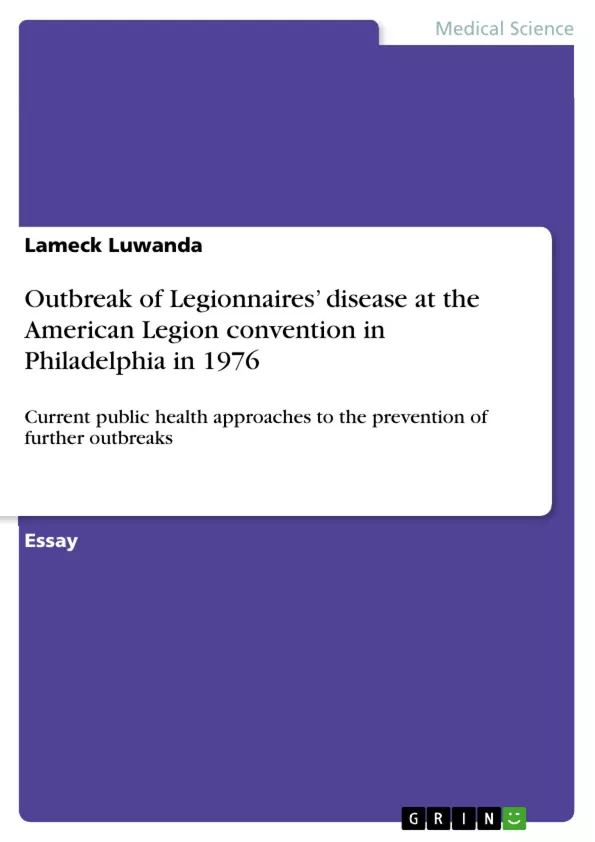Legionnaires disease (LD) is a bacterial pneumonia dated back to the mid of 20th century. Its name came from the fact that it was first described within the legionnaires in Philadelphia, United States of America (USA) in the 1970s. It is a debilitating infection and causes many complications which, if not taken care of, are lethal. The causative bacteria are called Legionella pneumophila; they are also associated with a non-pneumonic form called Pontiac disease.
LD is thought to be transmitted through a mist of aerosols from contaminated water sources like respiratory therapy equipment, showers, decorative fountains, cooling systems, potting soil, humidifiers, and ice machines. The bacteria replicate in the water, and the vulnerable individual gets infected by inhaling the small water droplets called aerosols which get into the body through respiratory tract. The vulnerable individuals have been identified to be those with weakened immune system like smokers, alcohol abusers, cancer patients, patients with final stage renal disease and diabetes mellitus, advanced age, people living with human immunodeficiency virus (HIV) or acquired immunodeficiency syndrome (AIDS) and those receiving drugs which suppress the immune system like steroids.
Table of Contents
- Introduction
- The first Legionnaires' disease outbreak in the USA
- Challenges and lessons learned since LD epidemic of 1976
- Current advances in the diagnosis of LD
- Current methods for public prevention
- Prevention of LD hospital outbreak
- Prevention of LD epidemic in the community
- Prevention of travel associated LD outbreak
- Conclusion
- References
Objectives and Key Themes
This essay aims to provide an overview of Legionnaires' disease (LD), focusing on the initial outbreak in Philadelphia in 1976, challenges and lessons learned since, current diagnostic advancements, and public health prevention strategies. The primary goal is to highlight the historical significance of the 1976 outbreak and its impact on understanding and preventing future outbreaks.
- Historical overview of Legionnaires' disease, emphasizing the 1976 Philadelphia outbreak
- Challenges encountered in identifying the causative agent and understanding transmission
- Lessons learned from the outbreak, including the development of public health prevention strategies
- Current diagnostic tools and methods for the detection and treatment of LD
- Current methods for public prevention, encompassing hospital, community, and travel-related settings
Chapter Summaries
- Introduction: This chapter provides a general overview of Legionnaires' disease, its history, and its causative agent, Legionella pneumophila. It also discusses the transmission route, susceptible individuals, and global prevalence.
- The first Legionnaires' disease outbreak in the USA: This chapter focuses on the first major outbreak of LD in Philadelphia in 1976, detailing the investigation process, clinical and epidemiological characteristics, and the identification of the Bellevue-Stratford Hotel as the primary exposure site.
- Challenges and lessons learned since LD epidemic of 1976: This chapter discusses the challenges faced in the initial outbreak, including identifying the causative agent, determining the mode of transmission, and finding an effective treatment. It also explores the lessons learned and their impact on public health prevention strategies.
Keywords
Legionnaires' disease, Legionella pneumophila, Philadelphia outbreak, 1976, public health, prevention, diagnosis, transmission, waterborne illness, aerosols, bacterial pneumonia.
- Quote paper
- Lameck Luwanda (Author), 2018, Outbreak of Legionnaires’ disease at the American Legion convention in Philadelphia in 1976, Munich, GRIN Verlag, https://www.grin.com/document/433599



